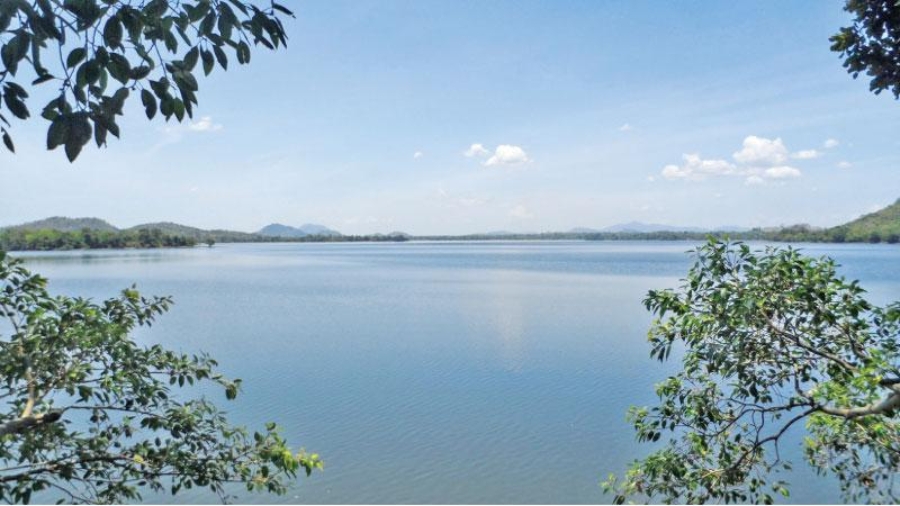Mahiyanganaya is a scenic town located in the Uva Province of Sri Lanka. Nestled amidst lush greenery and picturesque landscapes, it holds great historical and cultural significance for the country. Mahiyanganaya is known as the place where Lord Buddha visited and left his sacred footprint, making it an important pilgrimage site for Buddhists.
The town is surrounded by the beautiful Knuckles Mountain Range, which adds to its natural charm. It is blessed with a pleasant climate, with cool temperatures and refreshing breezes throughout the year. The area is rich in biodiversity, featuring diverse flora and fauna, making it a haven for nature enthusiasts and adventure seekers.
One of the prominent attractions in Mahiyanganaya is the Mahiyangana Raja Maha Vihara, a revered Buddhist temple believed to have been visited by Lord Buddha during his third visit to Sri Lanka.
The town also offers a variety of accommodation options, ranging from comfortable guesthouses to eco-lodges, ensuring a pleasant stay for visitors.
Overall, Mahiyanganaya is a hidden gem in Sri Lanka, offering a blend of spirituality, natural beauty, and cultural experiences that make it a must-visit destination for travelers seeking an authentic Sri Lankan experience.
There are several places of interest near Mahiyanganaya, Sri Lanka. Here are a few notable ones:
Mahiyangana Raja Maha Viharaya
Mahiyangana Raja Maha Viharaya is a revered Buddhist temple located in Mahiyanganaya, Sri Lanka. It holds great historical and religious significance as it is believed to be the site where Lord Buddha visited during his third visit to the country. The temple is home to the sacred Buddha’s Footprint, which is venerated by Buddhists from all over the country.
The Mahiyangana Raja Maha Viharaya is surrounded by serene and picturesque surroundings, nestled amidst lush greenery and mountains. The temple complex showcases a mix of ancient and modern architecture, with intricate carvings and colorful paintings adorning the structures.
One of the significant highlights of the Mahiyangana Raja Maha Viharaya is the sacred Bodhi tree, known as the Sri Maha Bodhiya. It is believed to be a sapling of the Jaya Sri Maha Bodhi tree in Anuradhapura.
The Mahiyangana Raja Maha Viharaya stands as a symbol of deep-rooted spirituality and devotion in Sri Lanka, drawing both locals and tourists seeking spiritual solace and cultural experiences. It offers a tranquil and serene atmosphere where visitors can immerse themselves in the teachings of Buddhism and experience the rich religious heritage of the country.
Sorabora Wewa
Sorabora Wewa is an ancient reservoir in Mahiyanganaya, believed to have been built during the reign of King Dutugemunu in the 2nd century BC. It is a testament to the advanced hydraulic engineering skills of ancient Sri Lankans and showcases the rich historical heritage of the region.
The construction of Sorabora Wewa required intricate planning and engineering techniques to ensure water supply, storage, and management. The reservoir played a vital role in supporting agriculture and enhancing the livelihoods of the ancient communities living in the region.
Visitors to Sorabora Wewa can admire the impressive engineering feat of the reservoir and the surrounding landscapes. The serene and picturesque environment offers a tranquil setting for leisurely walks, picnics, and boat rides on the reservoir’s calm waters.
Buduruwagala
Buduruwagala is a remarkable rock-carving site located near the town of Wellawaya. It features seven colossal statues of Lord Buddha carved into the rock face, dating back to the 10th century. The site showcases the impressive craftsmanship and artistic skills of ancient Sri Lankan sculptors.The largest and central figure is a standing Buddha statue, measuring approximately 51 feet (16 meters) in height, making it one of the tallest free-standing Buddha statues in Sri Lanka.
With its remarkable rock carvings and serene setting, Buduruwagala is a captivating destination that offers a glimpse into the artistic achievements and religious devotion of ancient Sri Lanka.
Visiting Buduruwagala provides a unique opportunity to witness the exquisite craftsmanship of the past and immerse oneself in the serene and spiritual ambiance of the site.
Dambana Village
Dambana Village is a significant cultural and heritage site located near Mahiyanganaya.It is home to the indigenous Vedda community, one of the earliest inhabitants of the island. The village offers a unique opportunity to experience the traditional lifestyle, cultural practices, and ancestral customs of the Vedda people.
The Vedda community has preserved their ancient way of life, living in harmony with nature and practicing hunting and gathering as their traditional livelihood. Visiting Dambana Village provides a glimpse into their rich cultural heritage, where visitors can witness traditional dances, music performances, and rituals that have been passed down through generations.
Exploring Dambana Village allows visitors to interact with the friendly and hospitable Vedda people. They are known for their exceptional knowledge of medicinal plants and the natural environment. Additionally, visitors have the opportunity to participate in activities such as archery, traditional hunting techniques, and gathering forest produce.
It provides a platform for cultural exchange, fostering a deeper understanding and appreciation of the indigenous heritage of Sri Lanka.
Rantembe Reserve
Rantembe Reserve is a protected forest area located near Mahiyanganaya in the Kandy District of Sri Lanka. It is part of the Central Highlands UNESCO World Heritage Site, which encompasses several important natural and cultural sites in the region.
The reserve covers a significant portion of the Rantembe Mountain Range and is characterized by its lush green forests, pristine landscapes, and diverse ecosystems. It is primarily known for its rich biodiversity and serves as a critical habitat for numerous plant and animal species.
Rantembe Reserve is not only significant for its ecological value but also for its role in maintaining water resources. It acts as a catchment area for the Rantembe Reservoir, which plays a crucial role in supplying water for irrigation and hydropower generation.
It offers an opportunity to explore the untamed beauty of Sri Lanka’s Central Highlands and witness the wonders of its diverse ecosystems.

Add a Comment